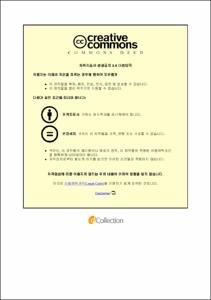링형 PZT 세라믹스의 제조 및 특성에 관한 연구
- Abstract
- PZT ceramics was known as some of the most useful piezoelectric materials. This study has been examined on the fabrication and characterization of ring-type lead zirconate titanate(PZT) ceramics. The phase composition, microstructure, dielectric and mechanical properties of the ring-type PZT ceramics have been investigated according to manufacturing method. The ring-type PZT ceramics was fabricated by centrifugal forming method(CFM). To improve the formability of ring-type PZT green body, PZT slurry was used with various organic binders such as polyethylene glycol(PEG), polyvinylalcohol(PVA) and boiled-sea algae(grateloupia elliptica, GE). The ring-type PZT green body was formed by centrifugal machine and then dried at room temperature. After drying, it was sintered at 1100 to 1300℃ for 2 hours. PZT with GE binder could be gained better shape. The density of the PZT ceramics was the highest at 1250℃ and it showed more homogeneous microstructure and lower porosity.
Next, the influence of forming pressure and sintering temperature on the mechanical properties of ring-type PZT ceramics was investigated. The PZT ceramics was formed by hot press(HP) device and then sintered at 1250 to 1350℃ in furnace under atmosphere. The diametrical contraction rate of the PZT ceramics was lower with increasing forming pressure and the density increased with increasing forming pressure. It was considered that the sintering rate increased with the forming pressure because of the more contact points of the PZT powder. However, the density of the PZT ceramics sintered at 1350℃ was decreased due to over-sintering. The compressive strength of the PZT ceramics was excellent at the higher forming pressure, and the Vicker’s hardness was the highest value at 1300℃ under 10.40 MPa. The grain size of the PZT ceramics was large with increasing the sintering temperature.
And mechanical properties of ring-type PZT ceramics were investigated on the effect of sintering condition. Ring-shaped green body of the PZT was fabricated by powder molding method and then the PZT ceramics were sintered at different heating rate 3, 5 and 10℃/min, respectively. The high-density PZT ceramics was gained in closed-crucible during a sintering process. And the compression strength of the PZT ceramics decreased with heating rate and increased with forming pressure. The hardness of PZT ceramics was improved with increasing forming pressure. In low heating rate, the microstructure of the PZT ceramics was gained better grain and homogeneous.
Finally, the effect of heat treatment on the mechanical properties of ring-type PZT ceramics was investigated. Two kinds of the PZT ceramics were prepared by sintering at different heating rate 3 and 5℃/min, respectively. The density of the PZT ceramics was not significantly different on the heat treatment. On the other hand, the compression strength of the PZT ceramics was improved with increasing the heat treatment temperature and time. After polling, the compression strength of the PZT ceramics increased because of reducing the surface defect. And the hardness of the PZT ceramics did not differ in accordance with the heat treatment because the average grain size was unchanged during the heat-treated at low temperature. The heat-treated PZT ceramics had lower porosity size and number than the untreated one. The average grain size of the heat-treated PZT ceramics was not changed in spite of the long-term heat treatment and this heat treatment was not affection on the dielectric property.
- Issued Date
- 2019
- Awarded Date
- 2019. 2
- Type
- Dissertation
- Publisher
- 부경대학교
- Affiliation
- 부경대학교 대학원
- Department
- 대학원 재료공학과
- Advisor
- 문창권
- Table Of Contents
- Abstract
I. 서 론 1
1. 압전 세라믹스 1
2. 티탄산 지르콘산 연(PZT) 5
3. PZT계 세라믹스의 응용 10
II. 원심성형법을 이용한 링형 PZT 세라믹스의 제조 16
1. 이론적 배경 16
2. 실 험 18
가. 재료 및 PZT 슬러리 제조 18
나. PZT 세라믹스의 제조 20
3. 결과 및 고찰 23
가. 각 조건에 따른 PZT 세라믹스의 제조결과 23
나. PZT 세라믹스의 표면 특성 및 밀도 30
다. PZT 세라믹스의 미세구조 34
4. 요 약 36
III. 성형압력과 소결온도에 대한 링형 PZT 세라믹스의 기계적 특성 37
1. 이론적 배경 37
2. 실 험 38
가. 분말재료 38
나. PZT 세라믹스의 제조 42
다. PZT 세라믹스의 물성평가 44
3. 결과 및 고찰 46
가. PZT 세라믹스의 수축률 46
나. PZT 세라믹스의 밀도 50
다. PZT 세라믹스의 압축강도 52
라. PZT 세라믹스의 비커스 경도 54
마. PZT 세라믹스의 미세구조 56
4. 요 약 66
IV. 링형 PZT 세라믹스의 기계적 특성에 대한 소결조건의 영향 67
1. 이론적 배경 67
2. 실 험 69
가. 재료 및 PZT 세라믹스의 제조 69
나. PZT 세라믹스의 물성평가 73
3. 결과 및 고찰 74
가. PZT 세라믹스의 밀도 74
나. PZT 세라믹스의 기계적 특성 78
다. PZT 세라믹스의 결정구조 82
라. PZT 세라믹스의 미세구조 85
4. 요 약 95
V. 링형 PZT 세라믹스의 특성에 대한 열처리의 영향 96
1. 이론적 배경 96
2. 실 험 98
가. 재료 및 PZT 세라믹스의 제조 98
나. PZT 세라믹스의 열처리 조건 100
다. PZT 세라믹스의 분극 102
3. 결과 및 고찰 105
가. 열처리된 PZT 세라믹스의 밀도 105
나. 열처리된 PZT 세라믹스의 기계적 특성 107
다. PZT 세라믹스의 유전특성 113
라. PZT 세라믹스의 결정구조 117
마. 열처리된 PZT 세라믹스의 미세구조 119
4. 요 약 125
VI. 결 론 126
Reference
- Degree
- Doctor
- Files in This Item:
-
-
Download
 링형 PZT 세라믹스의 제조 및 특성에 관한 연구.pdf
기타 데이터 / 23.82 MB / Adobe PDF
링형 PZT 세라믹스의 제조 및 특성에 관한 연구.pdf
기타 데이터 / 23.82 MB / Adobe PDF
-
Items in Repository are protected by copyright, with all rights reserved, unless otherwise indicated.